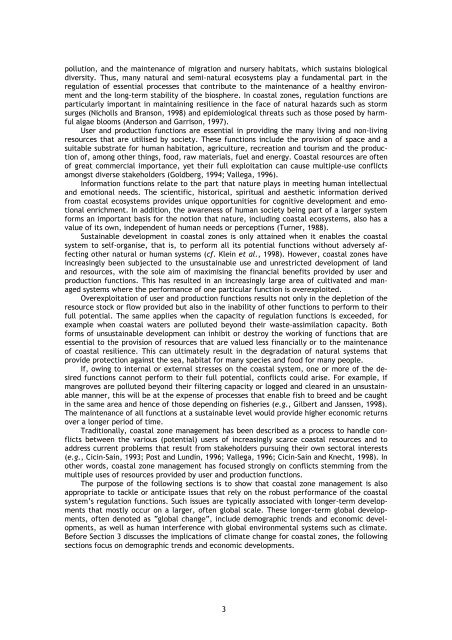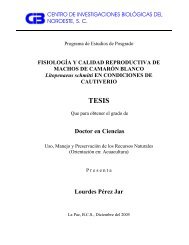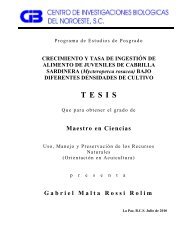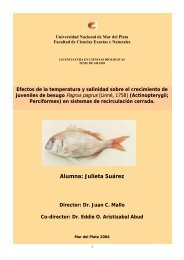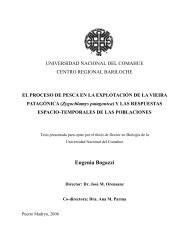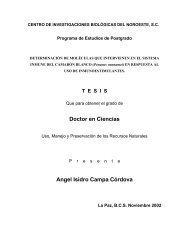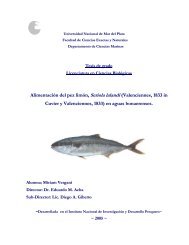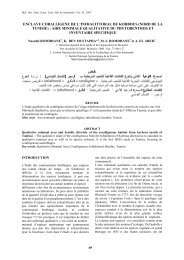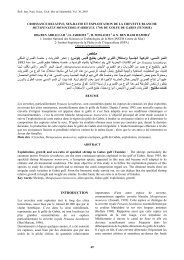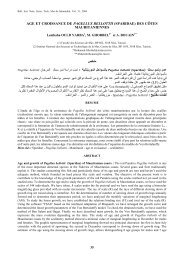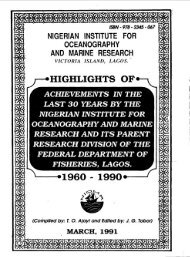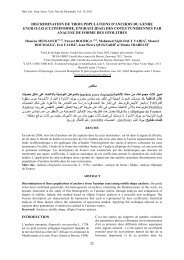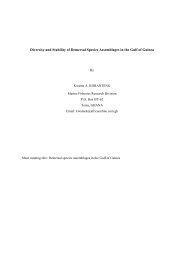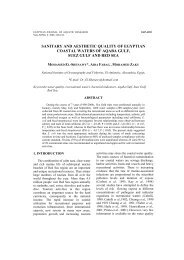Coastal vulnerability, resilience and adaptation to ... - OceanDocs
Coastal vulnerability, resilience and adaptation to ... - OceanDocs
Coastal vulnerability, resilience and adaptation to ... - OceanDocs
You also want an ePaper? Increase the reach of your titles
YUMPU automatically turns print PDFs into web optimized ePapers that Google loves.
pollution, <strong>and</strong> the maintenance of migration <strong>and</strong> nursery habitats, which sustains biological<br />
diversity. Thus, many natural <strong>and</strong> semi-natural ecosystems play a fundamental part in the<br />
regulation of essential processes that contribute <strong>to</strong> the maintenance of a healthy environment<br />
<strong>and</strong> the long-term stability of the biosphere. In coastal zones, regulation functions are<br />
particularly important in maintaining <strong>resilience</strong> in the face of natural hazards such as s<strong>to</strong>rm<br />
surges (Nicholls <strong>and</strong> Branson, 1998) <strong>and</strong> epidemiological threats such as those posed by harmful<br />
algae blooms (Anderson <strong>and</strong> Garrison, 1997).<br />
User <strong>and</strong> production functions are essential in providing the many living <strong>and</strong> non-living<br />
resources that are utilised by society. These functions include the provision of space <strong>and</strong> a<br />
suitable substrate for human habitation, agriculture, recreation <strong>and</strong> <strong>to</strong>urism <strong>and</strong> the production<br />
of, among other things, food, raw materials, fuel <strong>and</strong> energy. <strong>Coastal</strong> resources are often<br />
of great commercial importance, yet their full exploitation can cause multiple-use conflicts<br />
amongst diverse stakeholders (Goldberg, 1994; Vallega, 1996).<br />
Information functions relate <strong>to</strong> the part that nature plays in meeting human intellectual<br />
<strong>and</strong> emotional needs. The scientific, his<strong>to</strong>rical, spiritual <strong>and</strong> aesthetic information derived<br />
from coastal ecosystems provides unique opportunities for cognitive development <strong>and</strong> emotional<br />
enrichment. In addition, the awareness of human society being part of a larger system<br />
forms an important basis for the notion that nature, including coastal ecosystems, also has a<br />
value of its own, independent of human needs or perceptions (Turner, 1988).<br />
Sustainable development in coastal zones is only attained when it enables the coastal<br />
system <strong>to</strong> self-organise, that is, <strong>to</strong> perform all its potential functions without adversely affecting<br />
other natural or human systems (cf. Klein et al., 1998). However, coastal zones have<br />
increasingly been subjected <strong>to</strong> the unsustainable use <strong>and</strong> unrestricted development of l<strong>and</strong><br />
<strong>and</strong> resources, with the sole aim of maximising the financial benefits provided by user <strong>and</strong><br />
production functions. This has resulted in an increasingly large area of cultivated <strong>and</strong> managed<br />
systems where the performance of one particular function is overexploited.<br />
Overexploitation of user <strong>and</strong> production functions results not only in the depletion of the<br />
resource s<strong>to</strong>ck or flow provided but also in the inability of other functions <strong>to</strong> perform <strong>to</strong> their<br />
full potential. The same applies when the capacity of regulation functions is exceeded, for<br />
example when coastal waters are polluted beyond their waste-assimilation capacity. Both<br />
forms of unsustainable development can inhibit or destroy the working of functions that are<br />
essential <strong>to</strong> the provision of resources that are valued less financially or <strong>to</strong> the maintenance<br />
of coastal <strong>resilience</strong>. This can ultimately result in the degradation of natural systems that<br />
provide protection against the sea, habitat for many species <strong>and</strong> food for many people.<br />
If, owing <strong>to</strong> internal or external stresses on the coastal system, one or more of the desired<br />
functions cannot perform <strong>to</strong> their full potential, conflicts could arise. For example, if<br />
mangroves are polluted beyond their filtering capacity or logged <strong>and</strong> cleared in an unsustainable<br />
manner, this will be at the expense of processes that enable fish <strong>to</strong> breed <strong>and</strong> be caught<br />
in the same area <strong>and</strong> hence of those depending on fisheries (e.g., Gilbert <strong>and</strong> Janssen, 1998).<br />
The maintenance of all functions at a sustainable level would provide higher economic returns<br />
over a longer period of time.<br />
Traditionally, coastal zone management has been described as a process <strong>to</strong> h<strong>and</strong>le conflicts<br />
between the various (potential) users of increasingly scarce coastal resources <strong>and</strong> <strong>to</strong><br />
address current problems that result from stakeholders pursuing their own sec<strong>to</strong>ral interests<br />
(e.g., Cicin-Sain, 1993; Post <strong>and</strong> Lundin, 1996; Vallega, 1996; Cicin-Sain <strong>and</strong> Knecht, 1998). In<br />
other words, coastal zone management has focused strongly on conflicts stemming from the<br />
multiple uses of resources provided by user <strong>and</strong> production functions.<br />
The purpose of the following sections is <strong>to</strong> show that coastal zone management is also<br />
appropriate <strong>to</strong> tackle or anticipate issues that rely on the robust performance of the coastal<br />
system’s regulation functions. Such issues are typically associated with longer-term developments<br />
that mostly occur on a larger, often global scale. These longer-term global developments,<br />
often denoted as “global change”, include demographic trends <strong>and</strong> economic developments,<br />
as well as human interference with global environmental systems such as climate.<br />
Before Section 3 discusses the implications of climate change for coastal zones, the following<br />
sections focus on demographic trends <strong>and</strong> economic developments.<br />
3


